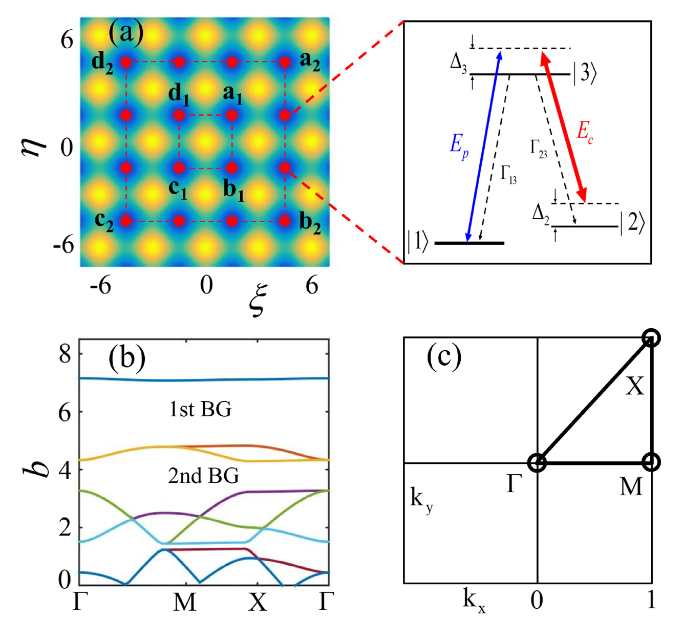As the core of the light field modulation technologies, optical lattice has highly tunability and is usually used to manipulate the nonlinear matter waves of Bose-Einstein condensate (BEC).At present, the mainstream researches are focused on coherent atomic systems like BECs which have been confirmed to be able to stably generate optical solitons under electromagnetically induced transparency (EIT) mode.
However, the related studies are limited to the periodic physical system in one dimension. Now a research group led by Prof. Dr. ZENG Jianhua from Xi'an Institute of Optics and Precision Mechanics (XIOPM) of the Chinese Academy of Sciences (CAS) extend it to two-dimensional. The results were published in Commun Nonlinear Sci Numer Simulat.
By the use of nonlinear Schr?dinger equation derive from Maxwell-Bloch equations, they create a coherent atomic gas which trapped by 2D optical lattices. Within the gas EIT operates, which can theoretically generate solitions in a coherent system.
Then they did the simulation and derive vital characteristics of 2D localized gap modes in forbidden band gaps of the underlying linear Bloch wave spectrum. By exploiting a linear stability analysis, the research group found that the stability areas of the 2D localized gap modes always show up in the middle of forbidden band gaps of the underlying linear band gap structure of the setting, whereas instable localized gap modes can be generated near the edges of the first and second finite band gaps. And although in the 2D localized gap modes shallow lattice the latter mode (gap vortices) created within the second gap cannot maintain stable, by modulating lattice it can become stable.
Considering the fast development of the optical lattices technique and EIT-related technique, scientists believe that the mixture of these two would soon come true. And at that time, localized gap modes that predicted in this work could be observed in the laboratory. Diverse applications that apply the predicted localized gap modes will spring like mushrooms in optical communications and quantum information processing.
This work was supported by the National Natural Science Foundation of China, Jiangxi Provincial Natural Science Foundation, Science and Technology Project of Jiangxi Provincial Education Department, and East China University of Technology Research Foundation for Advanced Talents.

Optical lattice, trapping scheme and band gap structure (image by XIOPM)


